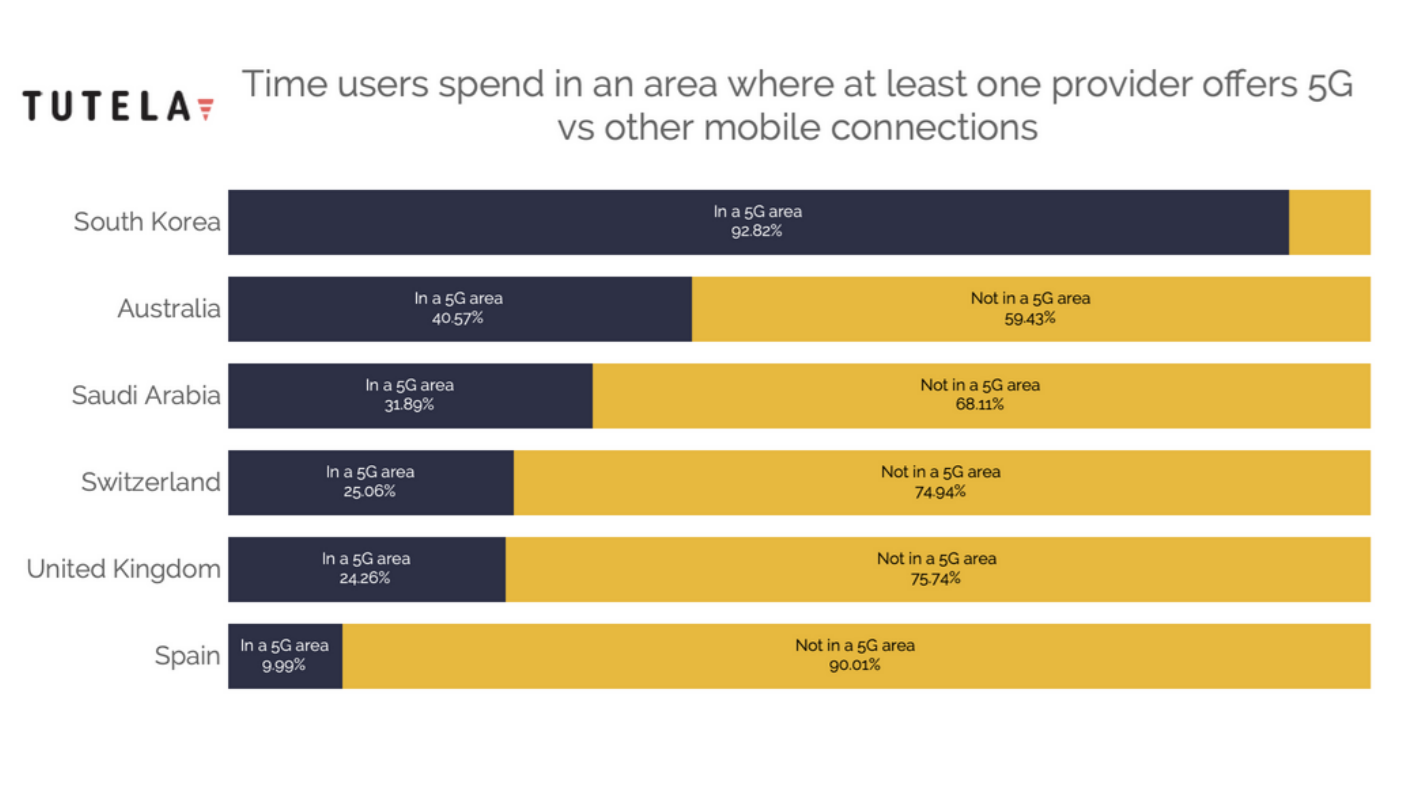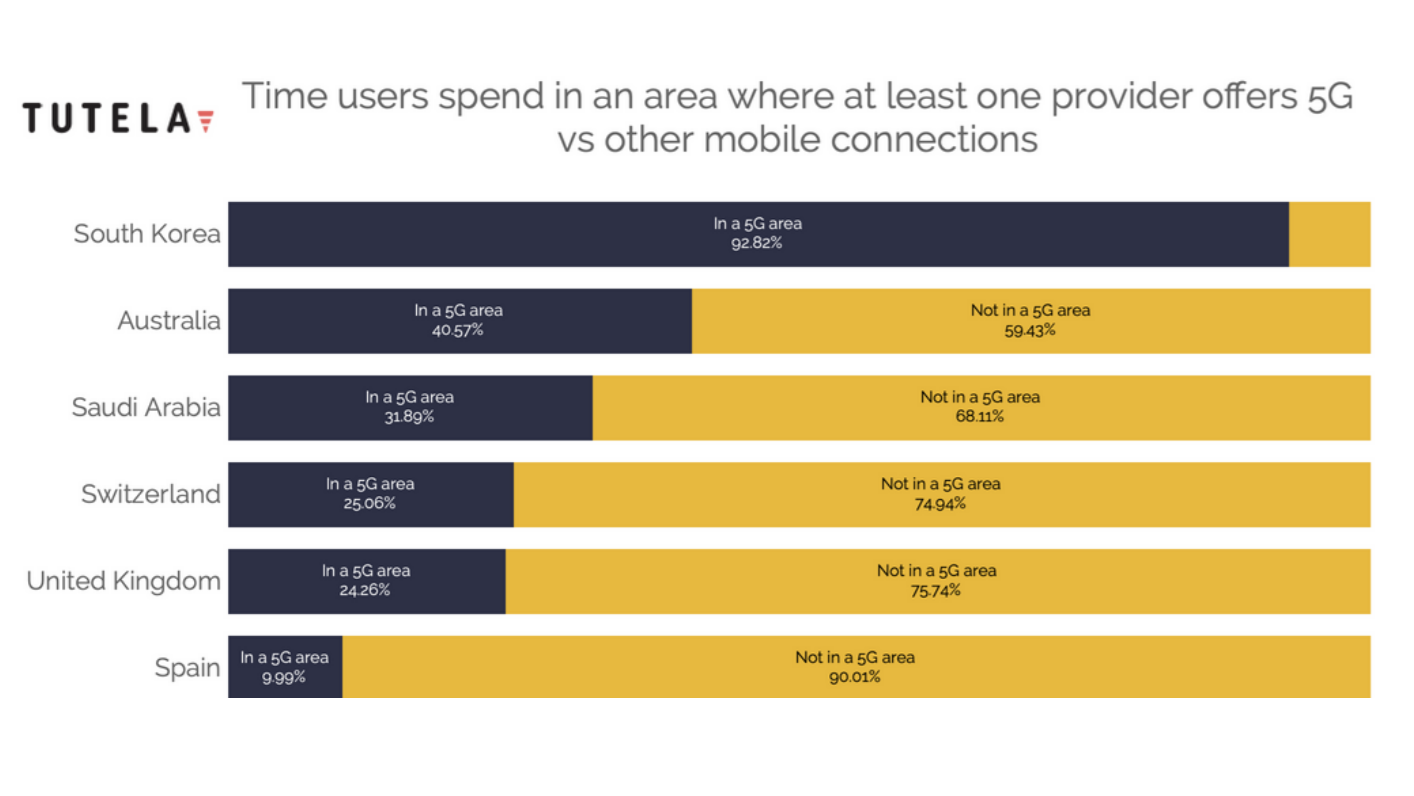5G mid-band report shows how the US market could evolve
A new report from global crowdsourced data company, Tutela, showcases the impact of mid-band 5G deployments in a selection of countries.

The US has now completed its auction of mid-band 5G spectrum, and a report from global crowdsourced data company, Tutela, has highlighted what this could mean for US consumers, as it looks at countries where mid-band 5G is the primary deployment type.
The report focuses on South Korea, Australia, Suadi Arabia, Switzerland, Spain, and the UK. All of these countries had allocated mid-band spectrum by March, 2019, and by measuring their coverage and performance, Tutela can provide a snapshot of what the US can expect.
"Mid-band, predominantly in the 3.5-3.6 GHz range, has quietly emerged as one of the more prominent deployment choices."
Tutela report.
“While mmwave 5G has attracted a lot of attention for its potentially revolutionary improvements over previous network deployments in terms of both capacity and performance, mid-band, predominantly in the 3.5-3.6 GHz range, has quietly emerged as one of the more prominent deployment choices in the mid-band 5G space,” the report says. “As countries like the US and Canada move to auction off spectrum blocks in this frequency range, it serves as a useful point to examine the state of mid-band 5G deployments in other countries around the world.”
Mib-band focus
The 5G research focuses on countries where mid-band spectrum has predominated, and does not include countries who pioneered early adoptions in the mmWave or low-band 5G space (like the US), due to the differences in network characteristics. And by implementing mid-band spectrum, some countries have been able to expand coverage at a much quicker rate.

“One of the most often-quoted stats about South Korea’s 5G is that the networks have achieved 90% population coverage with 5G, with 6.8 million subscribers, having access to the latest generation of connectivity as of May, “ the report explains. “In Tutela data, we also see mobile subscribers spending just short of 93% of their time in an area where at least one provider has 5G coverage. This is more than twice that of the next-closest country in the test, Australia."
Despite not being the first country to make its mid-band 5G spectrum available, South Korea has stolen a march over other countries, as it has placed more focus and investment on getting 5G into the hands of as many people as possible.

"This discrepancy highlights one of the most important differentiating factors between South Korea’s 5G approach and that of other countries: South Korea has been far more aggressive in the so-called “Race to 5G”, with operators slated to invest $22 billion on 5G networks by 2022(8)," the report claims. "This is a significant factor in explaining the significant gulf in time users spend in 5G covered areas between South Korea and other countries in this study.”
SIGN UP FOR E-MAIL NEWSLETTERS
Get up to speed with 5G, and discover the latest deals, news, and insight!
This report comes just days after the CBRS auction for the 3.5 GHz band concludes in the US, and could provide an indication of how long it may take for this spectrum to deliver results to US consumers.
- Discover the best 5G networks in the UK and US
- Get your hands on the hottest 5G phones
- Millimeter wave: the secret sauce behind 5G
- The complete guide to 5G security
- We reveal the latest 5G use cases
- Discover the truth behind 5G dangers
- 5G towers: everything you need to know
Dan is a British journalist with 20 years of experience in the design and tech sectors, producing content for the likes of Microsoft, Adobe, Dell and The Sunday Times. In 2012 he helped launch the world's number one design blog, Creative Bloq. Dan is now editor-in-chief at 5Gradar, where he oversees news, insight and reviews, providing an invaluable resource for anyone looking to stay up-to-date with the key issues facing 5G.

